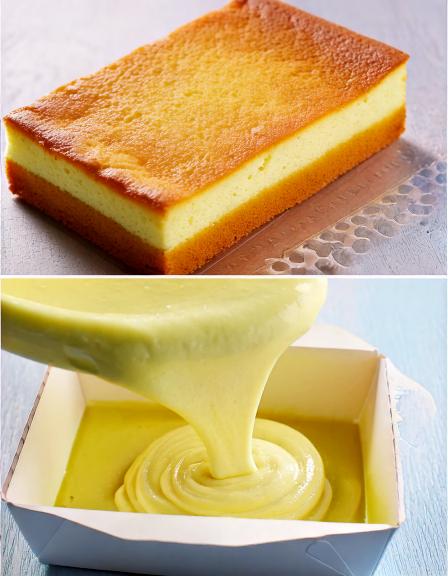
Fluffy 5-Ingredient Japanese Castella Cake – A Timeless Classic
Frequently Asked Questions (FAQs)
Q: Can I use all-purpose flour instead of bread flour?
A: Bread flour gives the cake its signature bouncy texture, but all-purpose flour can be used in a pinch—it will result in a slightly softer crumb.
Q: Why did my cake sink in the middle?
A: Overmixing or underbaking can cause the cake to collapse. Make sure to beat the eggs thoroughly and check for doneness with a toothpick.
Q: How should I store Castella cake?
A: Wrap the cooled cake in plastic wrap and store at room temperature for up to 3 days or refrigerate for up to a week.
Q: Can I freeze Castella cake?
A: Yes, wrap tightly in plastic wrap and freeze for up to 2 months. Thaw at room temperature before serving.
Notes
- Using bread flour ensures a chewy, bouncy texture unique to Castella.
- Beating the eggs until tripled in volume is key to achieving the right sponge consistency.
- Trimming the edges before serving enhances presentation and showcases the cake’s golden crust.
Nutritional Info (per slice):
- Calories: 210
- Total Fat: 3g
- Saturated Fat: 1g
- Cholesterol: 105mg
- Sodium: 50mg
- Carbohydrates: 38g
- Fiber: 0g
- Sugars: 24g
- Protein: 6g
Conclusion
Japanese Castella Cake is a beautiful blend of simplicity and elegance. With its moist, fluffy texture and delicate sweetness, it’s easy to see why this cake has remained a staple in Japanese bakeries for centuries. Whether served plain, with a dusting of powdered sugar, or alongside a cup of matcha, this cake is sure to impress. Take your time, follow the steps carefully, and enjoy the timeless charm of homemade Castella!


Yo Make also liked
Fig and Orange Tarte Tatin Recipe
Fantastic Mozart Cake with Nougat – A Symphony of Flavors!
Shocking! This Puff Pastry Dessert is Taking the Internet by Storm
Decadent 3-Layer Cake with Chocolate Caramel Glaze